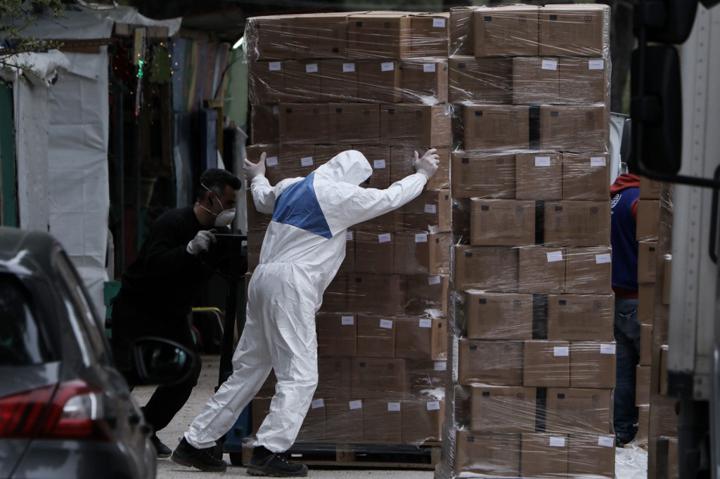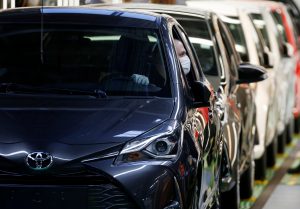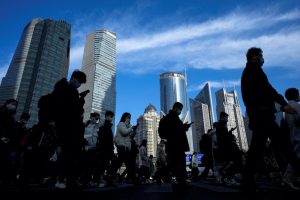(ATF) The global economy has fared surprisingly well in recent months, but a full V-shaped recovery from the coronavirus pandemic is far from assured. While stock markets are surfing a monster wave of central bank liquidity, underlying economic fundamentals remain vulnerable to the virulence of the virus and setbacks in the quest for a vaccine.
The Federal Reserve, the European Central Bank and the Bank of England were all sufficiently encouraged by the latest data to hang fire at their policy-setting meetings last week.
Fed policymakers now think US GDP will contract by 3.7% this year, a big improvement on the 6.5% decline they projected in June. They see unemployment ending 2020 at 7.6% instead of their previous forecast of 9.3%.
CHINA REFORMS: CCP announces plan to take control of China’s private sector
Citi’s Economic Surprise indexes show US data handily beating expectations, and easily outpacing the rest of the world.
But that is to look at the glass as half-full. Viewing it as half-empty, the US central bank expects to keep interest rates near zero until at least the end of 2023. And crucially, Congress is deadlocked on the extra fiscal help that most economists say is vital to sustain the recovery. A deal before the elections on November 3 now looks unlikely.
“There are still roughly 11 million people still out of work due to the pandemic, and a good part of those people were working in industries that are likely to struggle,” Fed Chairman Jay Powell told a news conference on Wednesday after the Fed policy meeting. “Those people may need additional support as they try to find their way through what will be a difficult time for them.”
Bank of England
The message from the Bank of England was similar. The central bank held off expanding its asset purchase programme – markets expect an announcement in November – but broke new ground by saying it would explore the operational implications of adopting negative interest rates.
The resurgence of the virus in many parts of the world, including the UK, risked weighing on future economic activity after a recovery in recent months that had exceeded expectations, the BoE said. About half of the output in the initial phase of the pandemic has been recouped, but by the end of July the British economy was still 11.7% smaller than in February.
The exception to this roll call of gloom is China. Boosted by Beijing’s success in containing the virus – after a stumbling start – the economy is likely to expand 1.8% this year, according to the Organisation for Economic Cooperation and Development (OECD), the only country its tracks that’s expected to grow in 2020.
Further clouding the outlook was uncertainty over the nature of the UK’s post-Brexit trading ties with the European Union, the BoE said. Even if negotiators overcome deep differences and reach a free-trade agreement, exporters and importers will face complex new border formalities, raising costs and introducing delays to just-in-time supply chains.
On the plus side, thanks to the government paying the wages of furloughed workers, plus a temporary scheme to subsidise eating out, UK retail sales rose in August for the fourth month in a row and are now 4% higher than in March before the pandemic. With more people working from home and a stamp duty holiday buoying the property market, demand for do-it-yourself kit and household goods has been very strong.
But it will be difficult to sustain these trends. The government has imposed tough restrictions on large parts of the country to try to contain the virus; the stamp cuts run out next March; and the unemployment rate, now at 4.1%, is set to surge when the furlough scheme winds down next month.
Job subsidies
In contrast to the UK, Germany and France are extending their job-subsidy schemes because of the persistence of the virus. Nevertheless, the European Commission expects Germany’s economy to shrink 6.3% this year, while France’s output will drop 8.7%, according to the Bank of France.
In Spain, some indicators fell back in August as the virus resurged, according to the Bank of Spain, which reckons the economy could be between 2% and 6% smaller at the end of 2022 than it was in 2019.
“Held back by structurally weak Italy, the eurozone average will probably reach its pre-pandemic level of activity only in mid-2022,” said Holger Schmieding, an economist with Berenberg, a German investment bank.
CREDIT BOOM: Alipay loans hit 300bn yuan as youth turn to credit
The exception to this roll call of gloom is China. Boosted by Beijing’s success in containing the virus – after a stumbling start – the economy is likely to expand 1.8% this year, according to the Organisation for Economic Cooperation and Development (OECD), the only country its tracks that’s expected to grow in 2020.
TS Lombard is even more optimistic. The economic consultancy has revised up its growth forecast to 2.4% from 2% on expectations that robust export demand will swell China’s current account surplus.
The pandemic has increased demand not only for medical equipment – exports of protective masks have jumped from 10 million a day in January to a whopping 115 million – but also for computer equipment as people switch to working from home. This sector alone has added a million jobs this year, TS Lombard says.

The pandemic has increased demand for Chinese-made medical equipment. Photo: Reuters
No wonder, despite its trade and tech stand-off with the US, that China’s exports in August logged the biggest year-on-year rise since March 2019. Retail sales, industrial production and property investment are all higher than they were a year ago.
Despite China’s recovery, Asia’s developing economies are set to contract this year for the first time since 1961, according to the Asian Development Bank.
For the global economy as a whole, the OECD in its latest Economic Outlook forecasts a contraction of 4.5% – milder than the 6% drop it projected in May but “still unprecedented in recent history”.
If the threat from the coronavirus fades more quickly than expected, improved confidence could boost global activity significantly in 2021, the Paris-based forum said. “However, a stronger resurgence of the virus, or more stringent containment measures, could cut 2-3 percentage points from global growth in 2021, with higher unemployment and a prolonged period of weak investment.”
In short, Covid-19 is still holding the world hostage. It’s a testament to human resilience that we are stumbling towards an accommodation with the virus. The global economy has thus held up fairly well. But uncertainty will persist, curbing growth, until a vaccine is discovered and distributed. That means investors need to keep paying as much attention to epidemiologists and virologists as they do to economic policymakers.
























